
Deliver a Learning Experience Tailored to Your Business
Integration has different meanings to different people, and that variance usually comes from what your position demands at the time. Thankfully, Axis LMS allows you to integrate different softwares and services into its ecosystem in meaningful ways that help you deliver a learning experience more tailored to your business, and your clientele.
Through broad stroke integration services, like Zapier; and more targeted items, like the calendar you use; Axis LMS can specialize in what it does best, while giving you the freedom of choice when it comes to many aspects of the user experience.
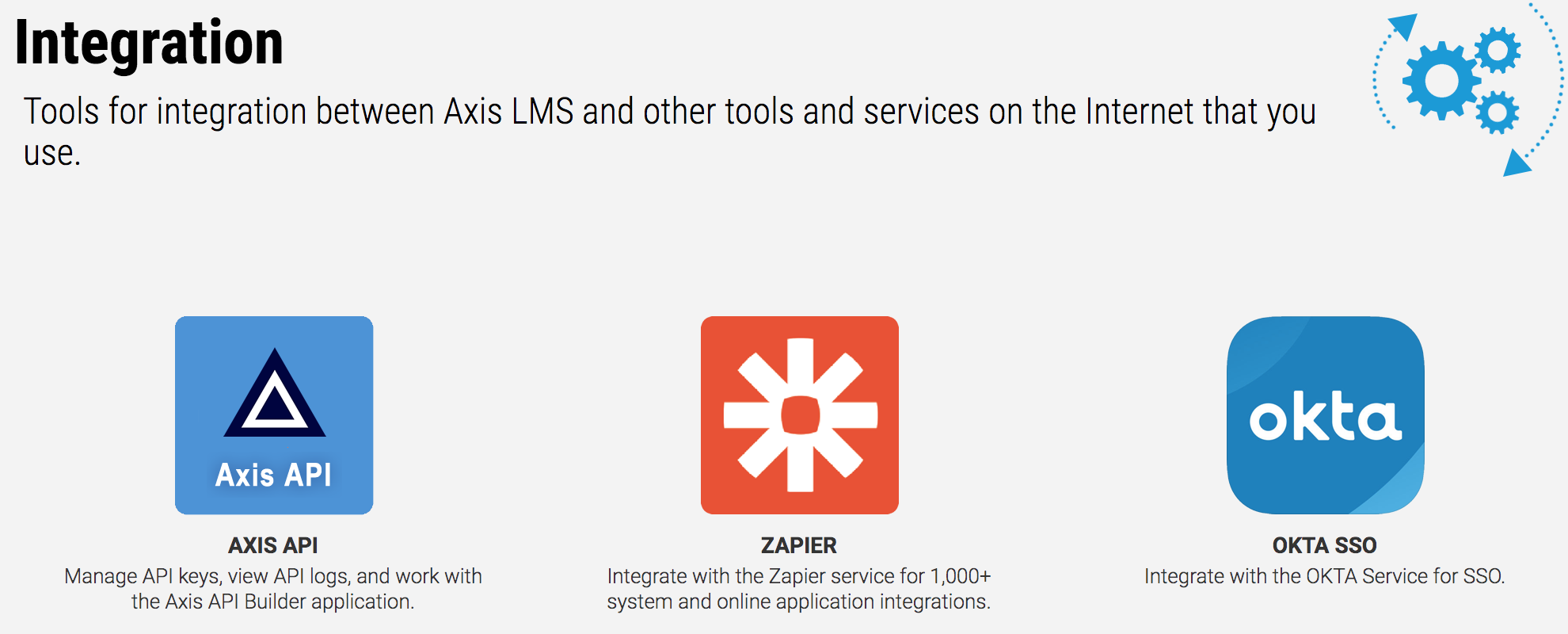
External Integration
Axis LMS offers its own library of API commands that administrators can utilize to create outside applications which interact with the LMS. These allow the most custom-tailored integrations possible, and also opens up avenues to integrate directly with privately-owned programs and softwares that your company is already using.
For those of you who aren’t as tech-savy, Zapier is a great tool. It is essentially an API translator. It allows Zapier services to have events and triggers in one program cause an effect in another program. A perfect example of this is the combination of Axis LMS and a Mailer, such as MailChimp. You may choose that when a user is created in Axis LMS (the ‘trigger’), to add that user to a mailing list in MailChimp (the ‘effect’).

By removing the development know-how of using API, Zapier makes creating these cause/effect relationships less intimidating to administrators looking to dive into the world of inter-system integrations.
Read more about integration through Zapier here.
Get started with Axis LMS API manual here.
E-Commerce
It’s no secret that Axis LMS allows you to sell content through its shopping cart; many businesses’ entire system is designed with that in mind. And when choosing to sell content through Axis LMS directly, there are two Payment Gateways which are integrated directly: PayPal and Authorize.NET.

Both payment gateways offer similar in-system settings, so which you choose for your integration is entirely dictated by your business’s needs. PayPal is commonly acknowledged as being more approachable for new businesses, while Authorize.NET is better known for its extensiveness and flexibility.
But if neither of these services are preferable to your business, you can once again turn to both Zapier and Axis LMS API library to look into external integrations; where the end event is to enroll your user into a Course or Class.
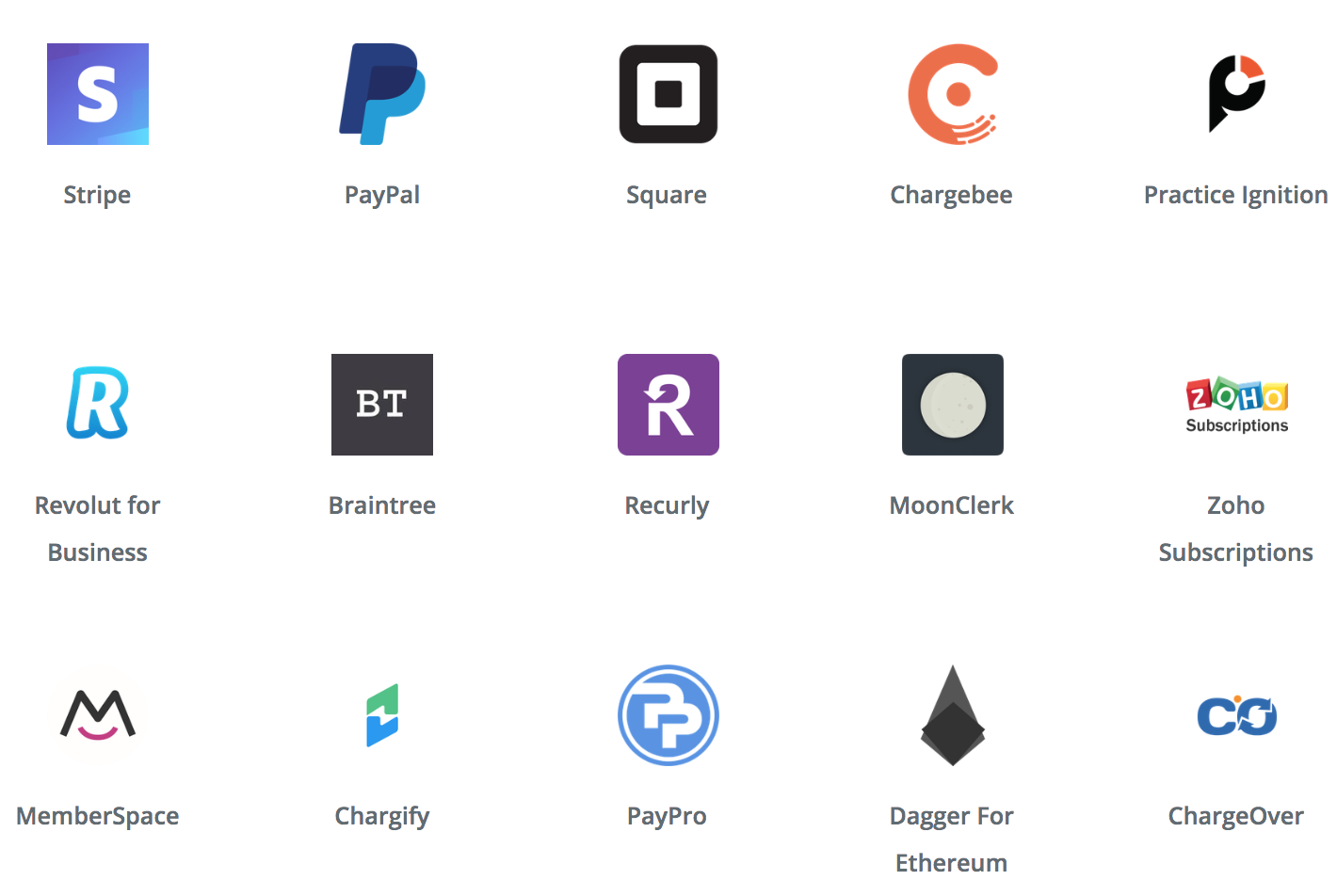
Learn how to set up your Payment Gateway here.
Mail Services
For a majority administrators, the built-in Axis LMS Mail Service is very reliable for reaching their end users. Because Axis LMS specializes in training, the built-in reports and tools don’t have a large focus on email. However, version 10.6 introduced two new Mail Service integration options, which allow administrators to redirect all system emails through one of these services.
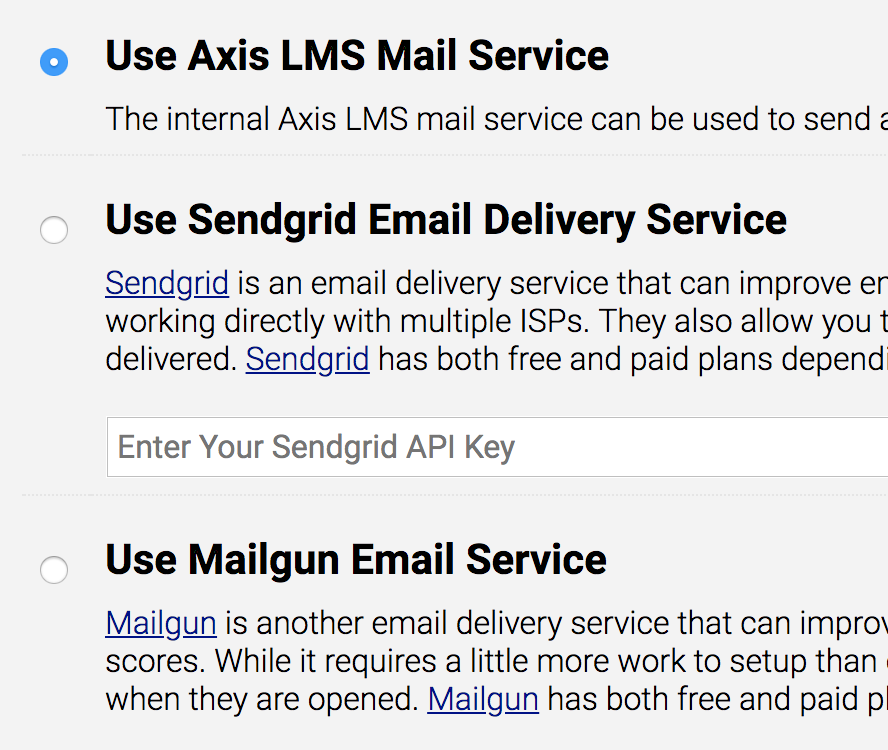
Both Mailgun and Sendgrid keep their own reports on emails sent through their service, so once you’ve opted into one of the two integration options, their Administrator interface allow you to check the optics on all the emails your Axis LMS is sending.
See how to get started with mail integration here.
Training
Axis LMS provides administrators many different methods to develop and deliver training to their users. But for administrators who have developed content outside the LMS, almost all of it can be integrated into your training seamlessly.
Though, ‘integration’ may be a bit of a stretch in this scenario, SCORMs authored in both Articulate’s Storyline, and Adobe’s Captivate can be brought into Axis LMS with almost no effort from the administrator. This leniency on ‘integration’ extends to other file types as well; including PowerPoints, PDFs, MP4s, among others – these files can all be dragged right into your Axis LMS Course Content Builder to be delivered as part of your curriculum.
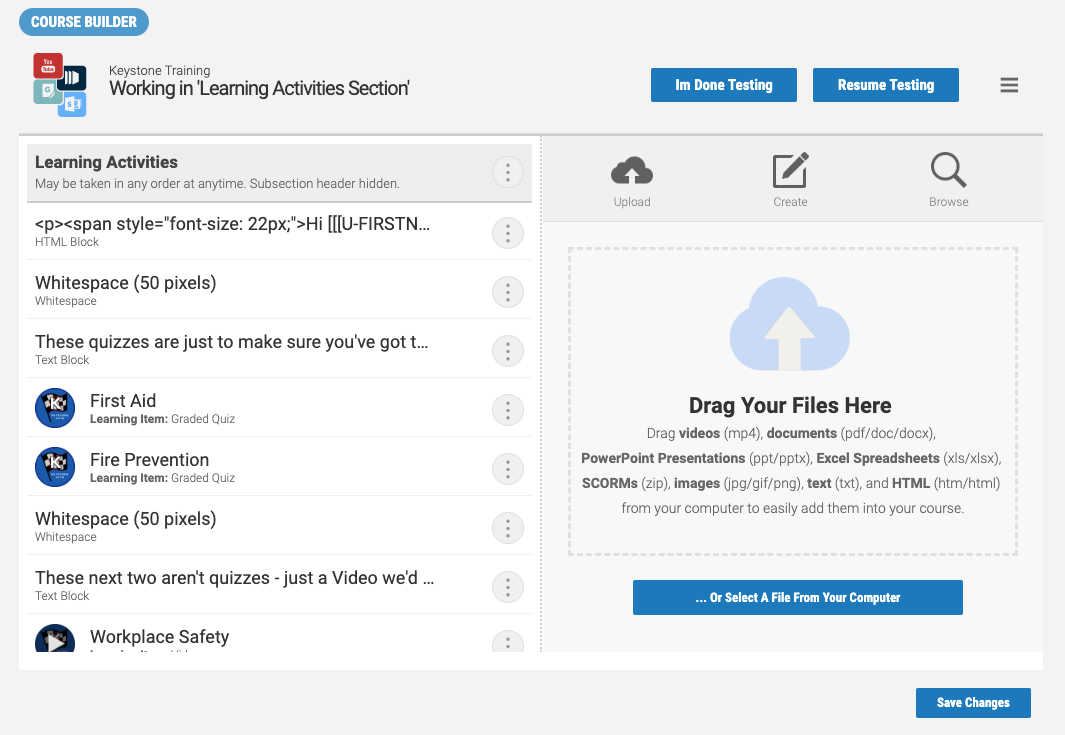
On a similar note, videos, including the ability to live-stream to your course, can be integrated into your LMS as well. Through combinations of services like OBS, YouTube and/or Twitch, you can ensure that your Axis LMS Courses are engaging and accessible to your users.
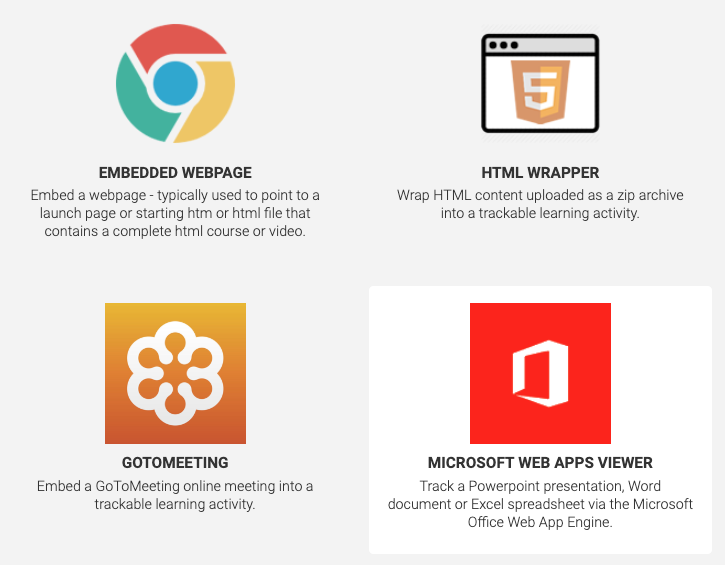
Watch how quickly you can set up your first course here.
Read up on how to get started with streaming to your courses here.
Other Integration
To round out the integrations discussion, there are some integrations that don’t quite fall into any of the categories we’ve laid out above. The first of which is Single Sign On integration; using an outside service to seamlessly log the user into Axis LMS. While other services may be compatible, integrating the Okta SSO service is discussed in this article.

Another outlier is embedding a calendar into your Axis LMS. The LMS provides you and your users a built-in system calendar, but if you choose to track your events using something less specific to the system, this article goes over integrating an external calendar; in this case, Google Calendars.
